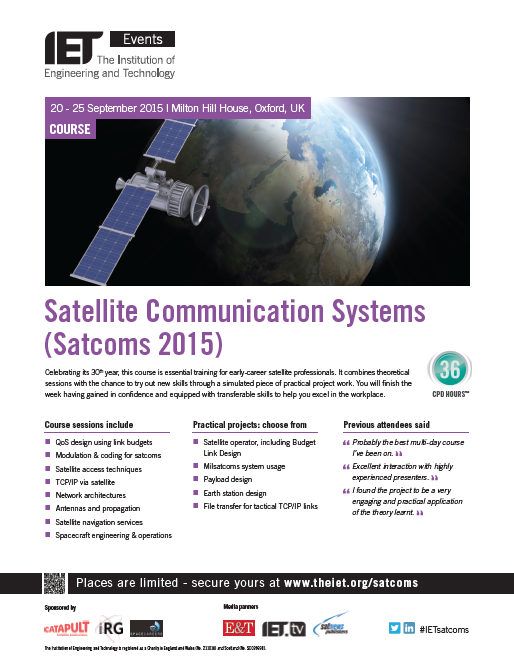Metadata-rich streams enable additional advertising revenue as consumers’ viewing habits change.

This new advertising revenue is needed to offset losses from traditional advertising that are the result of declining, traditional TV viewership.
Crystal, in concert with Satnews Publishers and Paul Woidke, an industry veteran and award winning SCTE expert, recently conducted a webinar on that inclusion of SCTE messages into the video stream (crystalcc.com/metadata-matters/). As a result, several questions were asked that are addressed here:
Today—using a sports metaphor as an example—the information about the content in each program segment is contained in the play-out automation system. In the future, additional information about the content will be generated at the cameras. This additional metadata describes such attributes as players on the field, where the ball is, who is in the field of view of each camera, and how many yards are left to the next down.
Managing and distributing a growing world of metadata will be challenging and involves moving information about program segments from automation systems into compressed transport streams that are distributed to cable head-ends, DTH providers, and web streaming content delivery networks (CDNs).
To discuss the methods by which you should insert metadata, the discussion will focus on the differences between live video and pre-recorded content.
Inserting Metadata Into Prerecorded Content
For non-live programs, the automation playlist can be parsed and the program segment descriptive information that must be inserted is known. The programmer must decide to build a splice schedule that delineates the beginning and end of each segment, and deliver that schedule using splice schedule SCTE-35 messages, and mark the end points of program segments using slice immediate or splice insert messages. Regardless of the method chosen, the programmer must use splice insert messages to embed splice descriptors for each segment.
Inserting Metadata Into Live Events
Precise prediction as to where segments will start or end during a live event is impossible, which means that the splice schedule method doesn’t work well for adding metadata to mark up program segments. For live events, the play-out automation system must send out triggers that can be used to insert the correct metadata. These triggers initiate the insertion of metadata that define the beginning and end of each segment, as well as metadata that describes the segment.
To meet the standard, a splice descriptor message describing the segment must occur at least four seconds prior to the start of a segment, which is possible for live events. If an encoder cannot properly translate splice descriptor SCTE-104 into SCTE-35 messages, then the descriptors and the beginning and end splice messages may be inserted through different methods (described later in this article.)
In that situation, the exact splice point can be identified with a separate SCTE-104 splice message that only identifies the beginning of a segment. Then, a different SCTE-35 message containing the segment descriptor can be inserted into the Mux, bypassing the encoder.
Handling Programs Going To Different Destinations
Many programmers must overcome the fact that some distribution streams need more, or different, metadata than others. A programmer’s traditional distribution transport stream sent via satellite to cable head-ends may not need complete metadata to describe the details of each program segment, However, a new transport stream that is sent to two other super head-ends may.
Relying on the automation playout system to send triggers to an external insertion system provides flexibility on how and where metadata is inserted. The external insertion system can generate SCTE-104 splice messages marking the beginning and end of segments for insertion into one pre-encoder stream, but not another and the insertion system can generate SCTE-35 splice insert messages with segment descriptors into another post-encoder stream. An external insertion system is effective with older play-out automation systems that are not capable of generating SCTE-104 messages.
Generating SCTE-104 messages that are inserted directly into the uncompressed video is no small undertaking—the encoder will be able to turn those into the correctly formatted SCTE-35 messages. The first consideration must be what type of SCTE-104 can be generated. Some items to consider:
Can any field in SCTE-104 messages be modified to properly describe a splice point or a segment?
In order to insert a clean splice point, your encoder must be capable of translating a SCTE-104 splice point message into a SCTE-35 message and inserting an IDR frame for all PIDs (video, audio, etc.) associated with that program. Some systems do not allow for full manipulation of a the data fields in a SCTE-104 message.
Are pre-formatted SCTE-104 messages simply triggered by a relay?
This can be done, but the method is very limited and makes it difficult to generate segment descriptors with different content identification values or descriptive data in each message.
If your system is able to generate the right SCTE-104 messages, will your encoders properly translate them into SCTE-35 messages? Private or proprietary messaging may prevent the encoder from working as expected. If you want to do more than an Avail or DTMF descriptor, your encoder may have issues interpreting and translating SCTE-104 message into a SCTE-35 message.
As the presence of a segmentation descriptor does not have to correspond to an IDR frame, it is possible and reasonable to inject a properly formatted SCTE-35 message into the post-encoder multiplexer, bypassing the video encoding function altogether. This method enables content identification signaling for older encoding systems that don’t support the SCTE-104 to SCTE-35 translation for segmentation descriptors.
This method may be used for proprietary data. To successfully implement, a middleware solution is needed to receive the triggers from the play-out automation system and generate the SCTE-35 messages that are delivered to the Mux. Also possible is for this same middleware system to generate the SCTE-104 splice messages and insert them into the uncompressed video stream ahead of the encoder.
During this evolution of consumer’s video consumption, content originators and distributors must keep the current distribution systems working and add new distribution systems that can generate additional revenue. It is imperative to become more operationally efficient and find ways to do more with less.
The push to support new revenue models—targeted advertising, services that enable toys to interact with video content, product placement and re-placement, consumer credits for sharing video segments and endorsing products will increase.
Companies that plan today to manage content smartly will reap the rewards of participating in new revenue streams wherever their content flows.
Eric Holtzclaw is the Chief Marketing Officer at Crystal. He may be reached at: eric.holtzclaw@crystallcc.com


